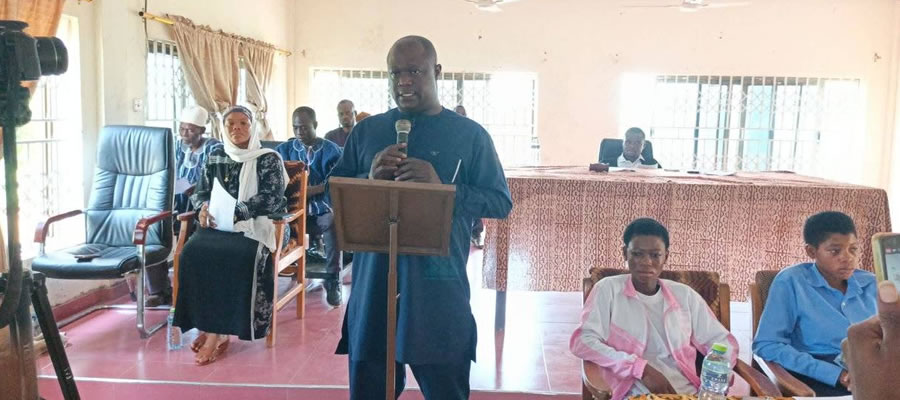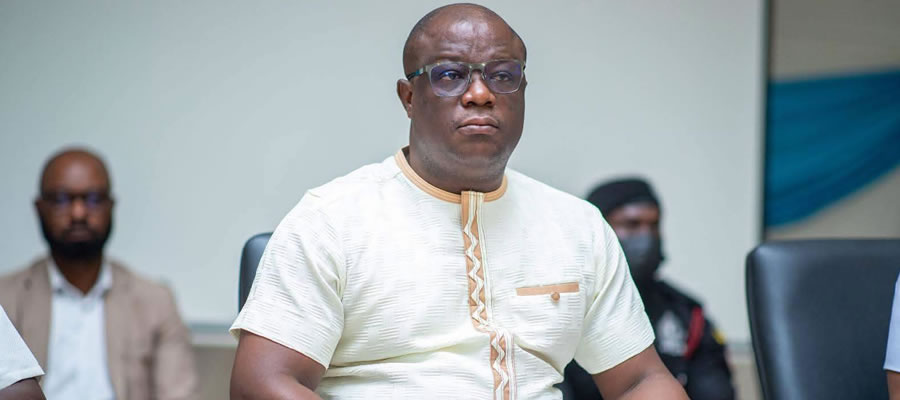

Water and Sanitation
Good source of drinking water and a clean environment constitute essential ingredients for safeguarding the health of people. The District is currently served by pipe-borne water system, boreholes and hand dug wells. Most of the facilities are publicly owned. Presently most hand dug wells often dry up especially in dry seasons, thus making water supply difficult all year round depriving about 50% of the people who depend on this source in the District. In view of this the District is now relying heavily on boreholes as the only reliable sources of water supply to communities, even though those settlements which depend on boreholes face acute water shortage any time the facilities break down.
Aside the unreliability of some of the sources of water, supply from streams is usually prone to many water-related and other diseases particularly when used for human consumption in its natural state. The trekking over long distances to fetch water further takes a substantial part of the productive time of the women and the children of school going age. The situation therefore calls for measures which would enable the people have access to potable water throughout the year.
Concerning sanitation, about 80% of households dump their solid waste in the open while only a few of them 5.8% take the trouble to burn their garbage. Furthermore about 90% use the free flow method to get rid of their water waste, the remaining 10% use soak away method. These insanitary methods of waste disposal are largely responsible for the frequent occurrences of diseases such as malaria and intestinal infections. The existing sanitation facilities in the District include, Ventilated Pit Latrine (VIP), Kumasi Ventilated Improved Pit Latrine (KVIP). Table23 below shows households’ methods of solid waste disposal in the district, as explained above.
Water Facilities
The District has varied sources of water which includes pipe-borne, boreholes, wells etc. only one community (Daffiama) in the District has access to pipe-borne water and the rest of the settlements depend on the other sources. However plans are far advanced to connect Issa and Bussie to a small town water system. Overall, there are 115 boreholes spread all over the District out of which 106 is functional and 9 needs rehabilitation. Presently, there are a few communities without any form of water facility to obtain potable water. The implication is that such communities are prone to water borne diseases such as guinea worm and bilharzia. Table 24 below shows the number of water facilities available in the District.
Going by the DWST standards the calculated coverage or number of people served by functional facilities, about 89% of the total estimated population have access to potable water. The District is performing above the national coverage (74.1%) but below the regional coverage of 90%, in terms of the provision of improved water supply to the people. Access to potable water is a major concern in the District as about 11% of the Population do not have access to potable water as shown in the diagram below.
Sanitation facilities
The existing sanitation facilities in the District include, Ventilated Pit Latrines (VIP), Kumasi Ventilated Improved Pit Latrines (KVIP) and Water Closets. Table1.23 shows the distribution of sanitation facilities according to households in the District.
The VIP’s and Water Closets are private while the KVIP and Septic tanks are public. It is estimated that 11.1% of current population have access to sanitation facilities. However due to improper management and maintenance most of the facilities have been neglected and people resort to free range open defecation which poses serious environmental and sanitation problems. In finding permanent solutions to the sanitation problems, the District Assembly is now emphasizing household toilets and hygiene education, to ensure a sense of ownership of facilities and their proper maintenance.
Refuse
Most of the refuse is dumped in the nearby bushes, gutters or the street. In some communities, there are demarcated areas where people dump their garbage, although nothing is organised in an official way. It is only in a few settlements namely Daffiama, Bussie, Issa, and Tabiesi; that there are some21 ways of organised garbage disposal.
Date Created : 4/10/2018 3:16:50 AM











 facebook
facebook
 twitter
twitter
 Youtube
Youtube
 +233 593 831 280
+233 593 831 280 0800 430 430
0800 430 430 GPS: GE-231-4383
GPS: GE-231-4383 info@ghanadistricts.com
info@ghanadistricts.com Box GP1044, Accra, Ghana
Box GP1044, Accra, Ghana